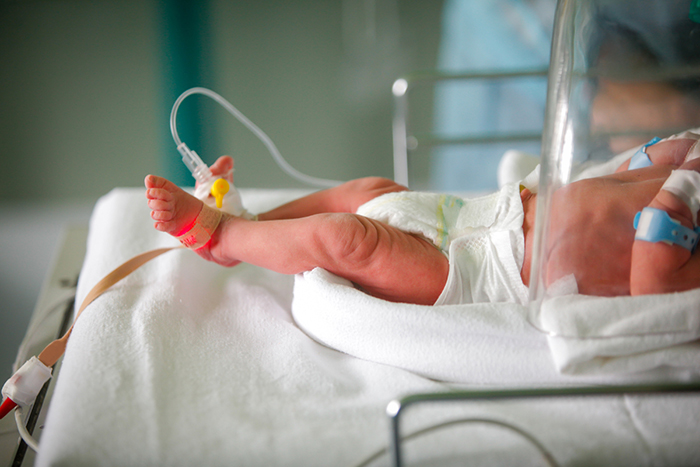
Preterm infants with a lower-than-normal growth rate have key differences in the bacteria and other organisms that live in their digestive tracts, according to a study funded by the Eunice Kennedy Shriver National institute of Child Health and Human Development. Moreover, byproducts of metabolism in slow-growing preterm infants are like those found in malnourished children, despite receiving a diet appropriate for their age.
The study was led by Noelle E. Younge, M.D., of the Department of Pediatrics at Duke University in Durham, NC. It appears in Scientific Reports.
Background
Growth failure is widespread among preterm infants. Previous studies have shown that infants born preterm grow more slowly than fetuses at the same stage of development in the womb. At the time of discharge from the newborn intensive care unit, roughly half of infants born preterm are below the 10th percentile in weight, length, and lean body mass. Poor growth among preterm infants increases the risk for cognitive delays, impairment in movement and coordination, and obesity, heart disease, and type 2 diabetes later in life. Although intravenous feeding methods and nutritional formulas have been developed to try to meet the needs of preterm infants, many still fail to grow at a normal pace.
Previous studies have found that among infants born preterm, the digestive tract microbiome—the bacteria and other organisms that live in the digestive organs—differs from that of infants born at term. The study authors sought to investigate whether the microbiome might be related to growth failure in extremely preterm infants, those born at or before 27 weeks of pregnancy.
Results
The study included 58 extremely preterm infants. Of these, 22 infants had an appropriate growth rate by the time they reached 40 weeks gestational age—equivalent to the time it takes to complete a full-term pregnancy. The remaining infants had severe growth failure.
Once a week for nine weeks, the researchers analyzed stool samples from the infants to identify the species of microorganisms that comprised their microbiomes. The microbiomes of infants with growth failure tended to have more Staphylococcaceae bacteria in the early weeks and more Enterobacteriaceae in subsequent weeks. Among the Enterobacteriacae, infants were more likely to have Citrobacter, Enterobacter, Serratia, and Klebsiella. Infants with appropriate growth had a greater abundance of Veillonellaceae in study weeks two through nine and Streptococcaceae, Peptostreptococcaceae, Micrococcaceae, Lachnospiraceae, and Bacillaceae over various intervals.
Many of the preterm infants with growth failure experienced medical complications from their prematurity, including sepsis (a blood infection) and necrotizing enterocolitis, a life-threatening condition affecting the intestines. These infants were also more likely than their peers to have growth failure.
To investigate whether these complications influenced the infants’ microbiome composition, the researchers conducted a second analysis in which they compared only the microbiomes of infants who did not have complications: 21 infants with growth failure and 20 infants with appropriate growth. The researchers found the same patterns of microbiome population between infants with and without growth failure, regardless of whether the infants had complications or not.
The researchers also compared metabolites, or byproducts, of digestion of infants with and without growth failure. Infants with growth failure had higher concentrations of glutamine, glutamic acid, and proline. Infants with appropriate growth had higher concentrations of methionine and histidine. The two groups also varied according to their concentrations of fatty acids. Infants with growth failure had patterns of fatty acid metabolites seen with the breakdown of stored fat, like that seen in malnourished children.
Significance
These findings provide clues that may lead to interventions for growth failure in preterm infants based on differences in their microbiome composition.
Reference
Younge, NE, et al. Disrupted maturation of the microbiota and metabolome among extremely preterm infants with postnatal growth failure. Scientific Reports.2019 https://doi.org/10.1038/s41598-019-44547-y .

 BACK TO TOP
BACK TO TOP